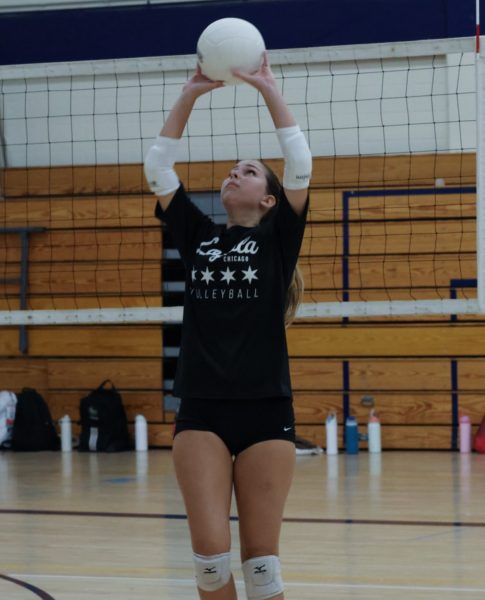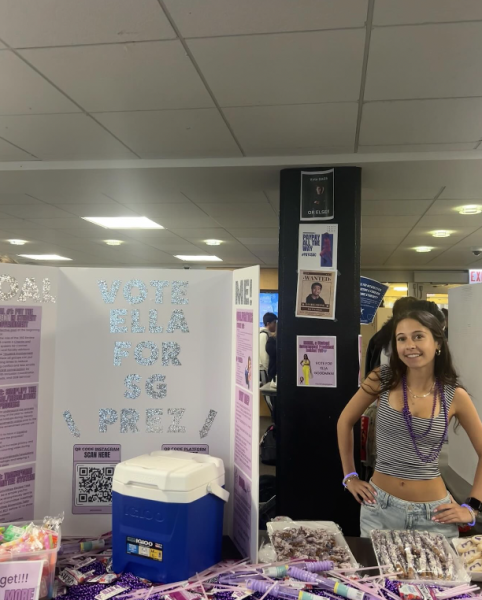The Atlantic’s Senior Editor Visits Parker
Gillian B. White Speaks to Students About Diversity
Photo credit: Abby Feitler
Gillian White speaks with Theresa Collin’s senior English class.
As students filed into their usual seats for Morning Ex on Wednesday February 24, the projector screens illuminated with a seemingly familiar phrase – “defining diversity.” In the background, however, and serving as foreshadowing for “The Atlantic” editor Gillian G. White’s presentation, were the words, “what do we mean when we say diverse?” A few students could be heard murmuring about “another MX about diversity.”
But what White presented in the MX, to Theresa Collins’s English class, and to the editors and then staff of this newspaper, was new to some students.
Sophomore Jett Bronstein said, “What Gillian presented on during her Morning Ex was a new idea regarding diversity that I didn’t expect her to talk about.”
Once a freelance journalist “with experience writing on a variety of topics including personal finance, economics, travel, food, and restaurants,” according to her website, White is now senior associate editor at The Atlantic.
In the MX, White argued that diversity, a statement regarding a group of people who are “different or varied,” rarely hews to the simple black and white idea some people conjure up when they think of diversity.
White began her Morning Ex by defining diversity and describing how she writes and reports using that definition. She then moved on to explain the “types of group diversity,” listing gender, race, education, and geography as the primary varieties.
Something that drew eyes to the projector screens was when White presented a pie chart with statistics about how diverse the United States will look in 2044. White reported that half of the U.S population is projected to be white by 2044 while about one fourth is projected to be of Latino descent. The rest of the population will be dominated by African-Americans, with those of mixed race also making a rise.
The main slide and idea that White touched on was the way in which diversity plays out in the world. She explained a bit about how stories are formed in The Atlantic’s newsroom. “It’s really important to have a diverse newsroom in order to find stories with depth,” White said. “If we never had women, or someone with a physical disability in the newsroom, then we would never know how they felt on a given issue, and we would never be able to react sensitively.”
After White’s MX, she spent gave insight to The Weekly Staff on how she picks story ideas.
“Weekly” Sports Editor and senior Jon Stone said, “White gave some incredible ideas to the staff about how to formulate quality stories when one might be stuck.”
White began her adult career taking advantage of the Economics degree she obtained from Columbia University in New York by accepting a job with UBS as a financial advisor associate.
After spending a few years in the financial world, White began to realize that it was reporting and writing that really interested her, so she took a position as a Staff Writer at Corporate Insight, a New York company that helps improve financial service companies, where she focused on brokerage firms. From there, White took a job as a reporter for Bloomberg which led her to get her Masters in journalism from Northwestern University, which opened doors for her at Kiplinger, a publisher of business forecasts and personal finance advice.
During the end of the MX, White shared a personal anecdote about writing a story about how physically handicapped people, mostly in wheelchairs, have trouble finding appropriate, cost-efficient housing. In her article she used the phrase “confined to a wheelchair.” After publishing the article, White said, she received a note from a handicapped person saying that such people were not confined by their wheelchairs, rather empowered – if they didn’t have their wheelchairs, then they would feel confined.
“I just didn’t know,” White said. “It was my own bias showing and I needed someone to tell me and point it out. Now it makes all the sense in the world to me.”











